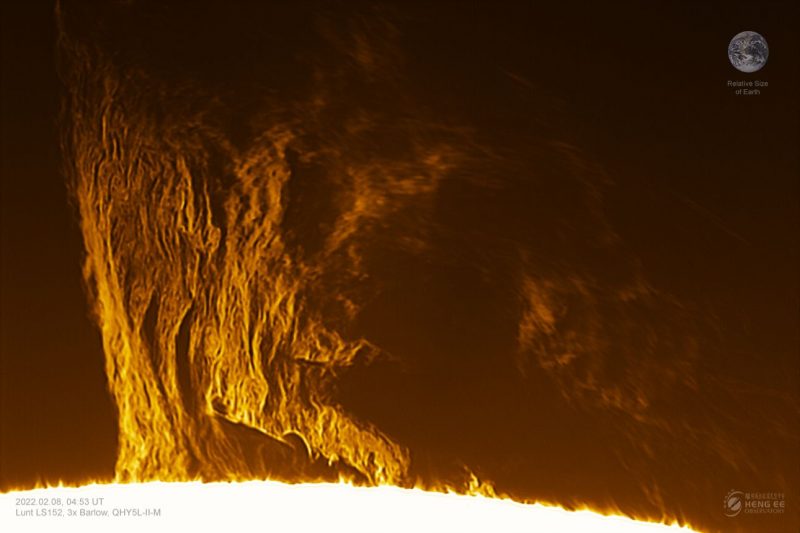
CME headed toward Earth
As solar observers can tell you, the sun has been active lately. Sunspot activity started picking up in December and has been pockmarking the sun ever since. As solar cycle 25 heats up, the sun occasionally releases coronal mass ejections (CMEs). And sometimes these fountains of plasma race right in our direction. On February 6, a CME erupted from sunspot AR2939. It’s headed toward Venus and then Earth. Scientists expect it to arrive at Venus on February 9 and then Earth on February 10.
The 2022 lunar calendars are here. Order yours before they’re gone!
The CME won’t trigger a geomagnetic storm on Venus. As Spaceweather.com said:
It can’t; Venus has no internally-generated global magnetic field. Instead, the impact will erode a small amount of atmosphere from Venus’ unprotected cloudtops.
But earthly skygazers can keep their eyes open for possible auroras starting on February 10 when the CME buffets Earth. At the moment, NOAA is predicting a G1, or minor, geomagnetic storm. But even a G1 storm can produce northern lights visible from Michigan to Maine.
WHEN WILL THE CME HIT EARTH? According to the NOAA models the CME (the bubble seen in the density movie) will hit Earth (green dot) on 10th February. 2-3 days later a high-speed coronal wind stream (the red spiral arm) will hit us. Either or both could produce a geomagnetic storm pic.twitter.com/EybsoMsQTo
— Keith Strong (@drkstrong) February 9, 2022
Bottom line: The sun released a CME on February 6. It’s headed toward Venus and Earth. People at high latitudes may see auroras starting February 10.
Read more: 40 Starlink satellites doomed by geomagnetic storm
The post CME may bring aurora on February 10 first appeared on EarthSky.
from EarthSky https://ift.tt/TQ63jNE

CME headed toward Earth
As solar observers can tell you, the sun has been active lately. Sunspot activity started picking up in December and has been pockmarking the sun ever since. As solar cycle 25 heats up, the sun occasionally releases coronal mass ejections (CMEs). And sometimes these fountains of plasma race right in our direction. On February 6, a CME erupted from sunspot AR2939. It’s headed toward Venus and then Earth. Scientists expect it to arrive at Venus on February 9 and then Earth on February 10.
The 2022 lunar calendars are here. Order yours before they’re gone!
The CME won’t trigger a geomagnetic storm on Venus. As Spaceweather.com said:
It can’t; Venus has no internally-generated global magnetic field. Instead, the impact will erode a small amount of atmosphere from Venus’ unprotected cloudtops.
But earthly skygazers can keep their eyes open for possible auroras starting on February 10 when the CME buffets Earth. At the moment, NOAA is predicting a G1, or minor, geomagnetic storm. But even a G1 storm can produce northern lights visible from Michigan to Maine.
WHEN WILL THE CME HIT EARTH? According to the NOAA models the CME (the bubble seen in the density movie) will hit Earth (green dot) on 10th February. 2-3 days later a high-speed coronal wind stream (the red spiral arm) will hit us. Either or both could produce a geomagnetic storm pic.twitter.com/EybsoMsQTo
— Keith Strong (@drkstrong) February 9, 2022
Bottom line: The sun released a CME on February 6. It’s headed toward Venus and Earth. People at high latitudes may see auroras starting February 10.
Read more: 40 Starlink satellites doomed by geomagnetic storm
The post CME may bring aurora on February 10 first appeared on EarthSky.
from EarthSky https://ift.tt/TQ63jNE

Aucun commentaire:
Enregistrer un commentaire